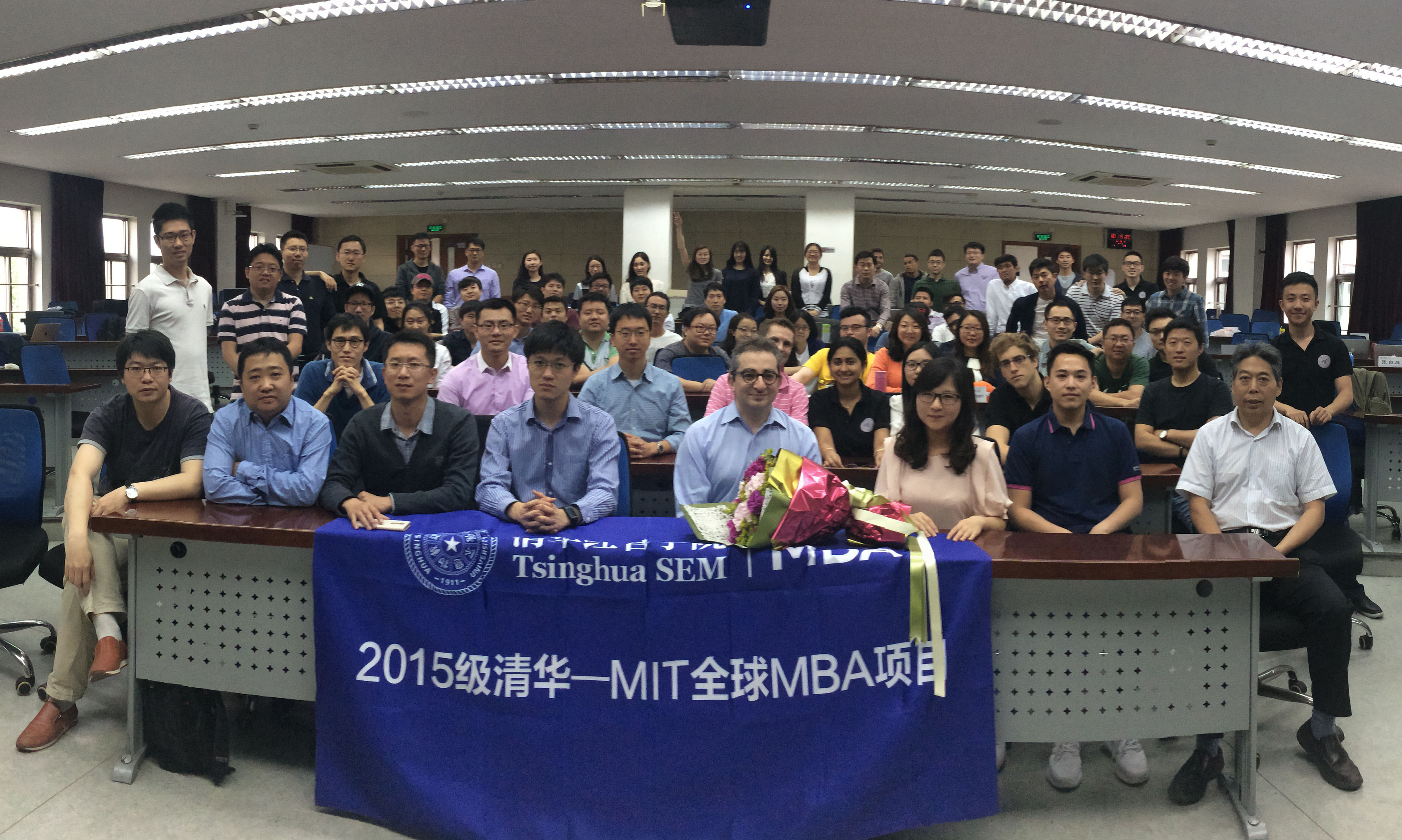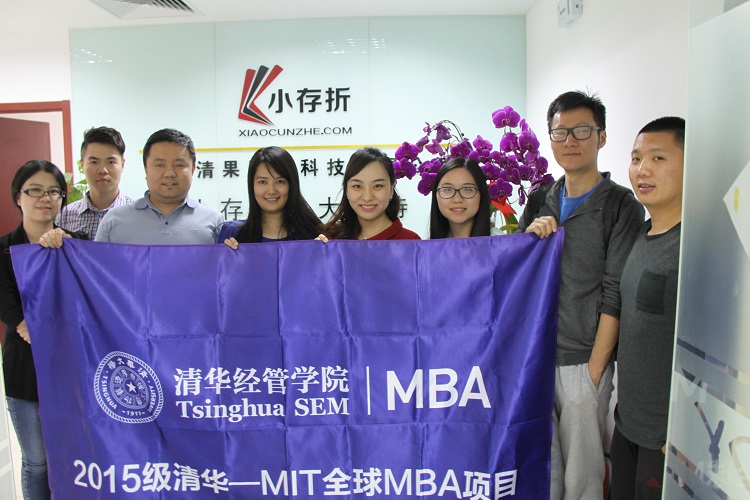Tim Hesler, GMBA Class of 2017
For many members of the Tsinghua-MIT Global MBA Class of 2017, one of the true highlights of the first-year elective curriculum was Entrepreneurial Strategy, a course that brought together the best of both Tsinghua SEM and MIT Sloan resources. As an aspiring entrepreneur myself, I found Entrepreneurial Strategy to be especially beneficial in preparation for my post-MBA path. The content was not simply a rehashing of conventional entrepreneurial wisdom; instead, it presented fresh frameworks through which to consider both age-old and emerging challenges and decisions.

MIT Sloan Professor Scott Stern pauses for a moment from an experiment exploring GMBA students' entrepreneurial strategic instincts.
The course is delivered in intensive sessions across both the fall and spring semesters and led jointly by Tsinghua SEM and MIT Sloan faculty. Structured in a “sandwich” model, Entrepreneurial Strategy consists of intensive classroom sessions held during two weeks in January and May as well as corporate visits and analyses in the intervening months. Professors Scott Stern and Pierre Azoulay of MIT Sloan conducted the majority of the classroom lectures and workshops in January and May, respectively. Meanwhile, as teams grappled with the application of course concepts in real-world business settings in China, Tsinghua SEM’s own Professor Gao Xudong, himself an alum of MIT Sloan, coordinated corporate visits and spearheaded dialogue and analysis.

Being pushed by Professor Scott Stern to consider new strategic tools.
From the first day of class, Professor Stern emphasized the distinction between an entrepreneurial idea and an entrepreneurial strategy. Entrepreneurial strategy, he would argue, is an integrated and actionable choice-oriented framework that is especially critical for start-up companies. For any given entrepreneurial idea, there may be multiple, seemingly equally viable potential strategies. However, since not all strategies can be pursued at the same time, Professor Stern pointed to what he calls the resulting Paradox of Entrepreneurship: “Choosing between equally viable alternative strategic commitments requires knowledge that can only be gained through experimentation and learning … yet the process of learning and experimentation inevitably results in (at least some level [of)] commitment that [forecloses] particular strategic options.”

Course participants reflect on their corporate visits and consulting work with sponsors.
Consequently, Professor Stern suggested that from the earliest strategic stages in an entrepreneurial endeavor, it is important for the entrepreneur to proactively choose his or her (1) competition, (2) customers, (3) technology, and (4) identity. These four choices, in combination, shape the entrepreneurial strategy and, ultimately, the extent to which a venture is able to both create and capture value. In combining those choices, entrepreneurs must consider where on the spectrum between collaboration and competition they will fall as well as whether they are more concerned with quick execution or retaining control. Ultimately, the answers to these questions help inform an entrepreneur whether to adopt an intellectual property (collaboration-control), value chain (collaboration-execution), architecture (competition-control), or disruption (competition-execution) strategy.

MIT Sloan Professor Scott Stern pauses for a moment from an experiment exploring GMBA students' entrepreneurial strategic instincts.
In a continuation from Professor Stern’s discussion of early-stage strategic choices, Professor Azoulay’s May module focused largely on the next piece of the entrepreneurial chronology: scaling up a venture. Through a variety of pointed case studies, we analyzed the successes and failures of multiple companies in scaling and related those narratives and outcomes to the framework being constructed over the two module sessions. We were then tasked in teams with allocating resources to a hypothetical venture, based – as in real life – on imperfect information regarding expected returns and strategic coherence.

Tsinghua-MIT Global MBA students cap off the Entrepreneurial Strategy course with a token of appreciation for MIT Sloan Professor Pierre Azoulay and Tsinghua Professor Gao Xudong.
Between Professor Stern’s module and Professor Azoulay’s, Professor Gao coordinated local corporate team visits. My own team met with a company focused largely on the interior hard fixtures segment of China’s residential real estate industry. Although the company is now growing after a bit of a sluggish start in its early history, one personally striking observation was how initially difficult it was for our team to cleanly categorize a chosen entrepreneurial strategy from the four options: IP, value chain, architecture, or disruption. A deeper analysis, however, led us to conclude that our company’s founders had lacked a clearly defined strategic vision at the start of their venture (even though they had some clear entrepreneurial ideas). We found a correlation between the company’s early performance troubles and this strategic confusion. However, after absorbing some early bumps along the way, our company’s choices had – whether consciously or not – become much more closely aligned, in our analysis, with a disruptive (competition-execution) strategy. Corresponding to that alignment was a noteworthy uptick in performance along a variety of metrics in the midst of substantial regional expansion.

GMBA students celebrate the conclusion of the course's first module.
For many members of my cohort, the course structure was unique in that it prompted us, by design, to slide between theory and practice with a fluidity uncommon in many academic settings. As many of us prepare to embrace emerging entrepreneurial endeavors within the next year, that fluidity will be indispensable as this pivotal two-year period influences much of our respective careers. In that sense, the Entrepreneurial Strategy course itself was not only a valuable academic experience but also, perhaps more importantly, a chance to more tangibly bridge the opportunities before us in the present with the inevitable demands of the future.

Course participants reflect on their corporate visits and consulting work with sponsors.